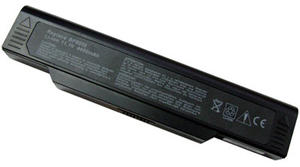Aviation securityNew airline safety worry: lithium-ion batteries
In January, the U.S. Department of Transportation (DOT) proposed stricter rules for companies that ship lithium batteries in cargo holds; lithium-battery experts, security analysts, and flight attendants wonder whether stricter rules are also needed in airline passenger cabins to prevent fires or worse: a possible attempt by a terrorist to bring down a plane by rigging a large number of batteries together to start a fire; right now, there is no limit to how many small lithium-ion batteries a passenger can carry aboard a flight; a materials scientist at the Argonne National Laboratory says that even a single cellphone battery could start a fire: “A smart terrorist can start fires with these things…. Any energy-storage device packs a lot of energy in a small space and can be used for good or evil”

The ubiquitous laptop battery // Source: laptop-keyboards.org
There is a new worry concerning airline security — lithium-ion batteries. Here are some examples:
- Worried about a possible terrorist strike, American Airlines flight attendants confiscated 58 cellphones, lithium-ion batteries, and charging devices from a passenger on a 23 June New York flight to Buenos Aires.
- In April, Tokyo police and fire officials rushed to a baggage area at Narita airport after a curling iron powered by a lithium-ion battery caused a passenger’s checked bag to burst into flames as it was being shuttled from an American Airlines jet to a connecting flight.
- A shipment of lithium-ion batteries caught fire as it was being loaded onto a FedEx jet at the company’s Memphis hub in August 2004. The National Transportation Safety Board, which investigates air accidents, said the probable cause was unapproved packaging used by the shipper, AC Propulsion.
- Lithium-ion batteries were inside cargo containers when a cargo hold fire destroyed a UPS jet at Philadelphia
- Since April 1999 — when a shipment of lithium batteries caught fire after being taken out of a passenger plane’s cargo hold at Los Angeles airport — the FAA has received reports of forty fires involving lithium batteries and devices powered by them, FAA spokeswoman Sasha Johnson says. The reports include:
- On 9 September 2009, a battery owned by American Airlines for use by passengers dropped during a flight and caught fire.
- On 8 August 2008, a passenger on an American flight from Washington to Dallas noticed his laptop was smoking. The passenger removed the battery pack and gave it to a flight attendant. The flight attendant placed the battery in a coffee pot in the aft gallery and poured water and Sprite on it.
- On 4 March 2008, a passenger’s video display device for viewing entertainment systems emitted a “10-inch plume of sparks and debris” on a United Airlines flight from Chicago to Tokyo. The captain doused the device with water. A small area of the carpet in the passenger cabin was damaged.
Gary Stoller writes in USA Today that lithium-ion batteries — the rechargeable energy source for cellphones, laptop computers, and an increasing number of other portable electronic devices — are becoming a growing concern for airlines in passenger cabins and cargo holds. Non-rechargeable lithium metal batteries like those in cameras and flashlights are a concern, too.
When a lithium battery short-circuits or overheats, it can catch fire or explode. The fire